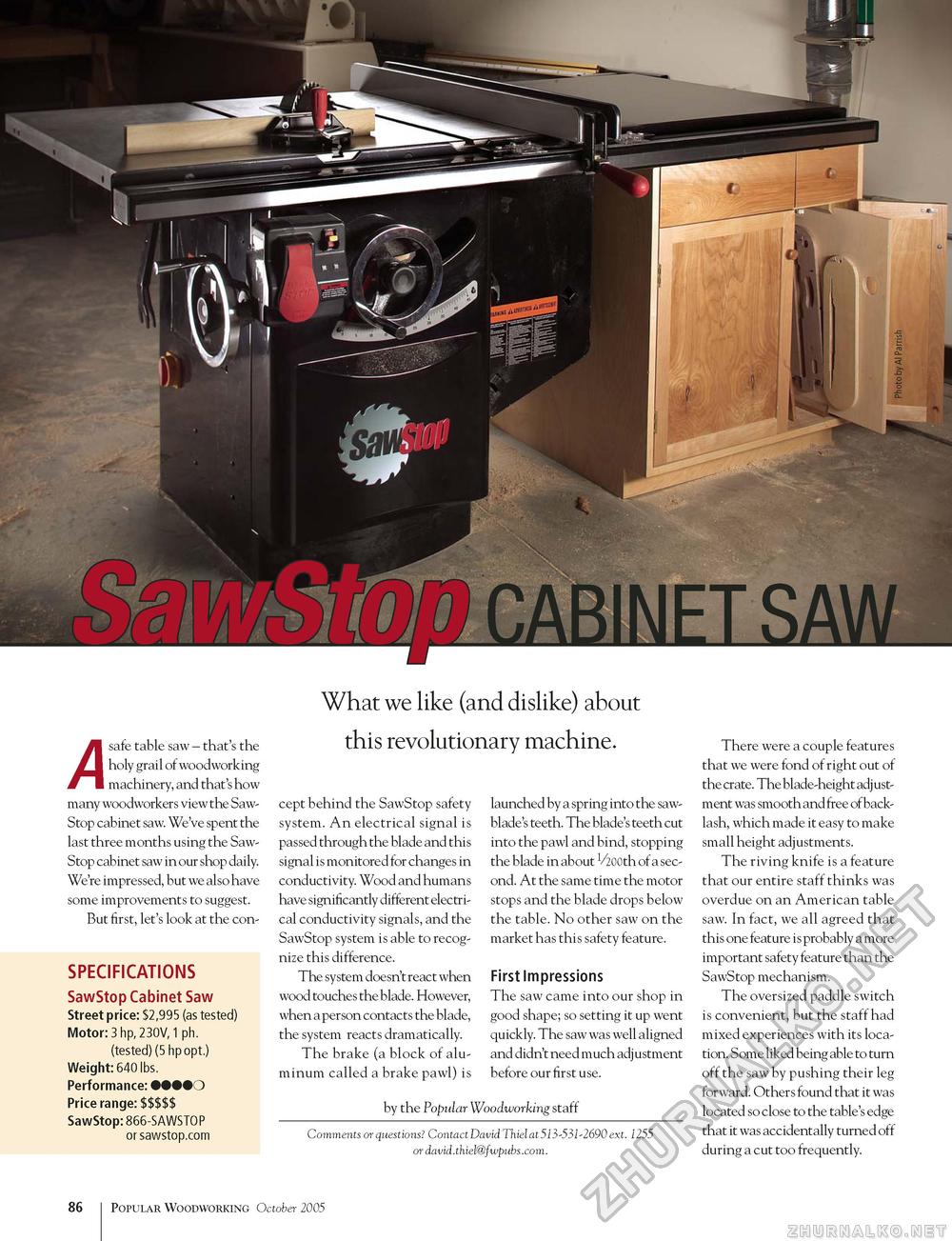Popular Woodworking 2005-10 № 150, страница 90
What we like (and dislike) about this revolutionary machine. safe table saw - that's the holy grail of woodworking machinery, and that's how many woodworkers view the Saw-Stop cabinet saw. We've spent the last three months using the Saw-Stop cabinet saw in our shop daily. We're impressed, but we also have some improvements to suggest. But first, let's look at the con- SPECIFICATIONS SawStop Cabinet Saw Street price: $2,995 (as tested) Motor: 3 hp, 230V, 1 ph. (tested) (5 hp opt.) Weight: 640 lbs. Performance: ••••o Price range: $$$$$ SawStop: 866-SAWSTOP or sawstop.com cept behind the SawStop safety system. An electrical signal is passed through the blade and this signal is monitored for changes in conductivity. Wood and humans have significantly different electrical conductivity signals, and the SawStop system is able to recognize this difference. The system doesn't react when wood touches the blade. However, when a person contacts the blade, the system reacts dramatically. The brake (a block of aluminum called a brake pawl) is launched by a spring into the saw-blade's teeth. The blade's teeth cut into the pawl and bind, stopping the blade in about V200th of a second. At the same time the motor stops and the blade drops below the table. No other saw on the market has this safety feature. First Impressions The saw came into our shop in good shape; so setting it up went quickly. The saw was well aligned and didn't need much adjustment before our first use. There were a couple features that we were fond of right out of the crate. The blade-height adj ust-ment was smooth and free of backlash, which made it easy to make small height adjustments. The riving knife is a feature that our entire staff thinks was overdue on an American table saw. In fact, we all agreed that this one feature is probably a more important safety feature than the SawStop mechanism. The oversized paddle switch is convenient, but the staff had mixed experiences with its location. Some liked being able to turn off the saw by pushing their leg forward. Others found that it was located so close to the table's edge that it was accidentally turned off during a cut too frequently. by the Popular Woodworking staff Comments or questions? Contact David Thiel at 513'531'2690 ext. 1255 or david.thiel@fwpubs.com. 86 Popular Woodworking October 2005 |








